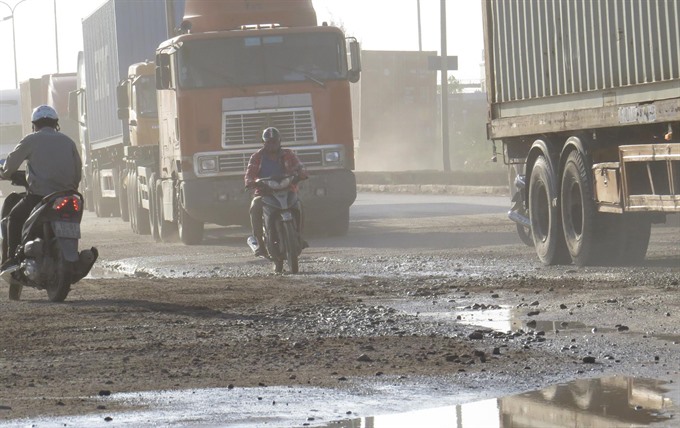 Society
Society

The air quality of the capital city of Hà Nội, particularly at industrial zones and areas with dense population has been improved thanks to the adoption of a number of measures.
 |
| Dust pollution on National Highway No 5 which connects the capital city of Hà Nội and northern port city of Hải Phòng. — VNA/VNS Photo Hoàng Ngọc |
HÀ NỘI — The air quality of the capital city of Hà Nội, particularly at industrial zones and areas with dense population has been improved thanks to the adoption of a number of measures.
Lưu Thị Thanh Chi, deputy director of Hà Nội Environment Protection Agency said these included the “One Million Trees Programme” and controlling pollution at sources.
Speaking at a workshop entitled Enhancing the engagement of stakeholders in air quality management of Ha Noi, Chi said improving air quality and environmental protection required strong and long-term cooperation between sectors and authorities at all levels, institutional research, civil society organisation and community support.
She blamed the air pollution on rapid urbanisation together with the rising population and the amount of private vehicles.
Statistics from city authority have showed Hà Nội with the population of eight million people and ubanisation accounting for 40 per cent.
There are six million registered motorbikes and 600,000 automobiles. The city consumes an estimated 40 million kilowatt hours of electricity and millions of litres of gasoline every day. These are major sources of Green House Gas emissions and air pollution in Hà Nội, she said.
According to a report from the World Health Organisation, aspiration diseases that are triggered by polluted air resulted in seven million deaths each year world-wide and 92 per cent of the world’s population is breathing unhealthy air.
Việt Nam is among the countries that have the worst air quality in the world, particularly dusty pollution.
To deal with the issue, Chi said, the city’s Department of Natural Resources and Environment (DONRE) had set up 10 air monitoring stations and post information on official websites to assess air quality and give warnings to people, adding that 20 stations more will be installed by 2020.
The city authority had poured capital in the development of public transportation system to encourage people engage in and limit the use of private vehicles. The use of clean energy in transportation was also promoted.
Such programmes to restrict waste pollution, particularly plastic and sorting waste at source were being implemented, she said.
In the meantime, the city authority also strengthened the campaign to raise people’s awareness on the harm of air pollution to the community, Chi said.
During the workshop, representatives of DONRE and development partners shared ideas about air management issues in Hà Nội to gradually improve the air quality.
The workshop was organised by DONRE, German Development Cooperation Agency GIZ and Centre for Living and Learning for Environment (Live &Learn), aiming to foster dialogue and cooperation between the public sector, private sector, civil society and Development Partners to promote joint action on improving air quality. — VNS




